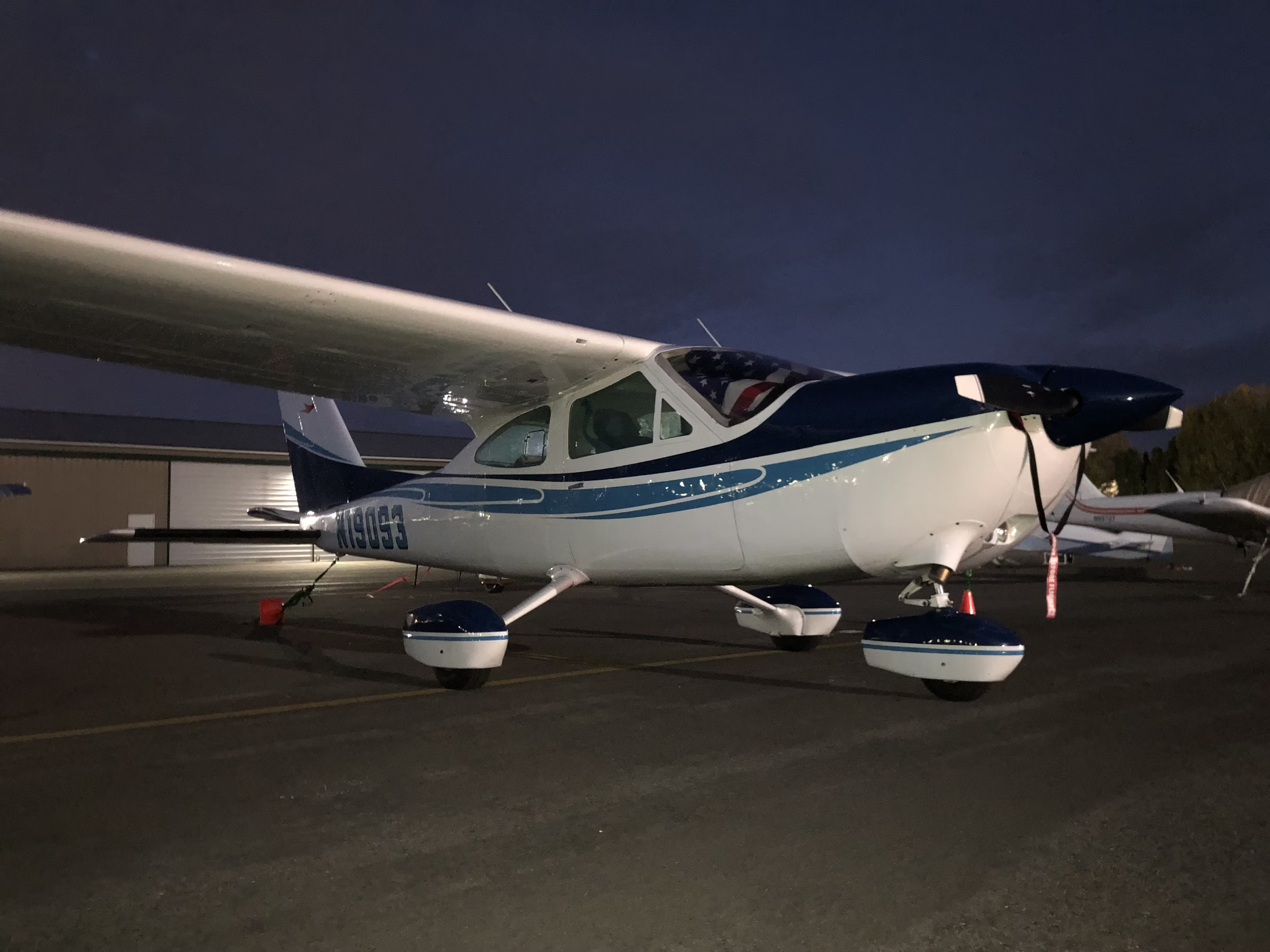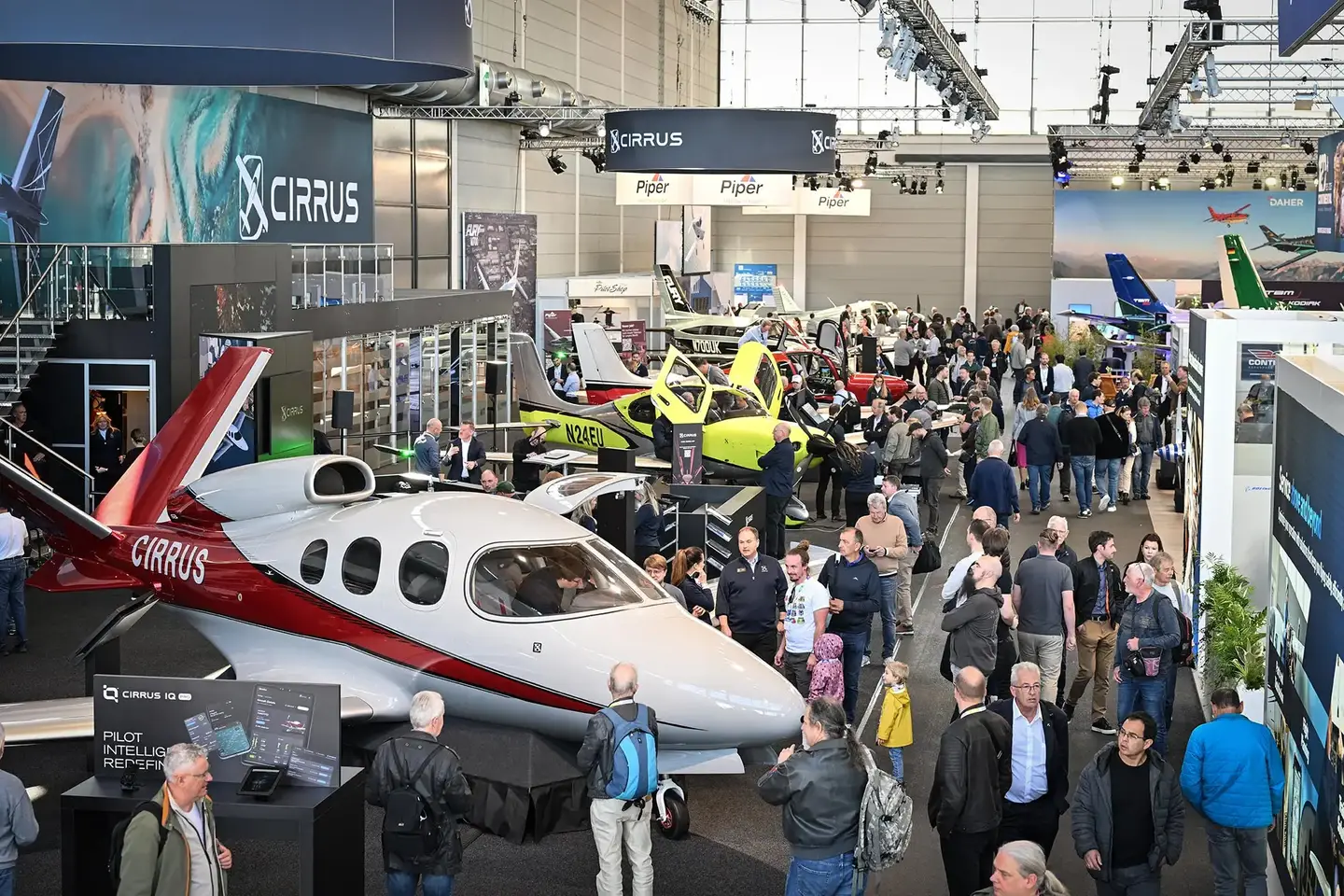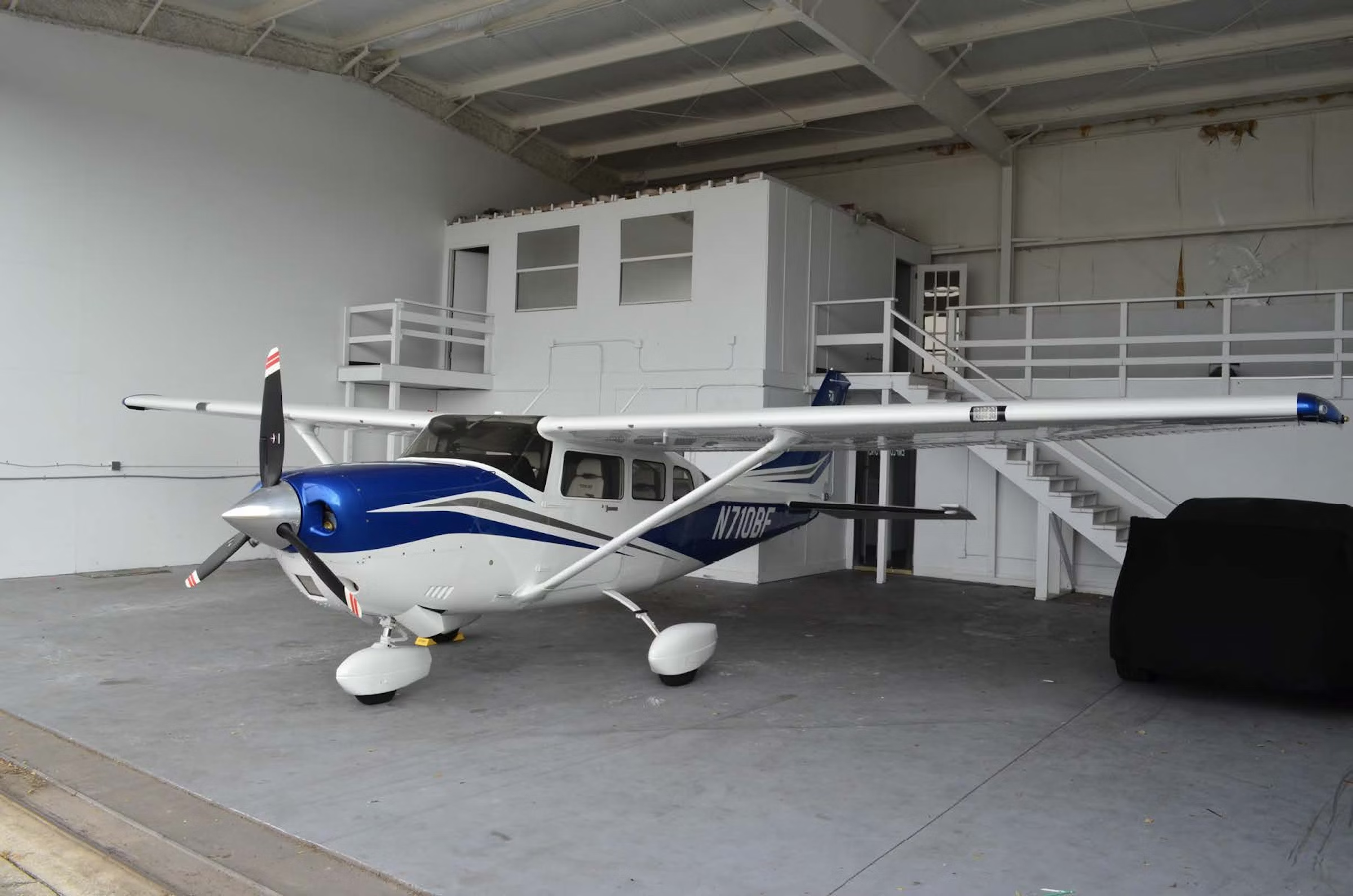
Fascination with creating the fastest airplanes has existed since the dawn of aviation. The first air races sprung up as early as 1909 and speed records quickly reached new highs, pushing aerodynamic engineers to reduce drag. As engine technology advanced, aircraft were designed around these new power plants, and over time the introduction of wind tunnels and computer software for aircraft design allowed engineers to more closely study the airflow around the surfaces of the airfoils and fuselage to reduce drag further and make airplanes even faster.
The jet age took speeds to an entirely new level as wings became smaller and engineers figured out new ways to optimize aerodynamic efficiency. For fixed wing airplanes, delta-shaped or swept-back wings produced the greatest speed. Helicopters have, in recent years, been modified to produce thrust in the horizontal plane, producing aircraft that not only are fast but can hover as well.
The best known speed record, though it has been broken since, was set in 1947 by the Bell X-1, piloted by Chuck Yeager. The X-1, powered by an XLR11 rocket motor, pushed beyond the sound barrier in 1947 after being released from a B-29 Superfortress at 23,000 feet.
Since that historic first supersonic flight, supersonic and hypersonic flight has continued to progress, going far beyond what was thought possible in the 1940s. Unmanned aircraft, such as the Hyper-X, which is nibbling on Mach 10, and the Falcon HTV-2, which has achieved controlled flight at Mach 20, display impressive speed advancements, but we'll limit this discussion to manned aircraft.
Fastest Civilian Jet:
Citation X+
Cessna recently reclaimed the number one spot as the maker of the fastest civilian jet — the Citation X+. Inside the massive cowlings of the plane are two dual-channel, fadec-controlled Rolls-Royce AE3007C2 engines that bring the X+ up to a maximum operating speed of Mach 0.935, a hair past the Gulfstream G650's Mach 0.925 — a speed that allowed the Savannah, Georgia-based company to steal the top spot from the Citation X for a few years.
In addition to its powerful engines, the Citation X+ gets its speed capability from the sharply swept wings and horizontal stabilizer and the aerodynamic fuselage shape, which makes use of what is known as the area rule, which speeds the flow of air over the fuselage with unintuitive shapes like you see in the X+'s distinctive belly bulge. The addition of winglets in this most updated version also helped improve the speed slightly at higher altitudes. The new higher speed of the X+ not only makes it the new speed champ for certificated, civilian airplanes but it also gives the new model a significant boost in range.
Fastest Jet:
SR-71
The SR-71 Blackbird is one of the most intimidating-looking airplanes ever conceived. It is also scary fast. During its early test flights in the 1960s, the Blackbird would set new speed records nearly every time it flew, and it ultimately topped out at Mach 3.5.
Powered by two Pratt & Whitney J58 engines (which were also designated as JT11D-20s), each producing 32,500 pounds of thrust, the SR-71 reached a sweet spot of Mach 3.2. Lockheed realized that at the targeted speeds the airplane would generate a lot of heat on the leading edges, hence the airplane was constructed using titanium alloys. With the thermal expansion and contraction, the SR-71 would leak fuel from its tanks, which carried JP-7 fuel specially made for supersonic aircraft with a higher flash point than regular jet fuel's. The Blackbird would burn about 36,000 to 44,000 pounds of fuel per flight hour.
The SR-71 broke several city-pair records, including Los Angeles to Washington, D.C., in just over one hour and New York to London in less than two hours.
Fastest Civilian Single-Engine Piston:
Mooney Acclaim Type S
Mooney has always had a reputation as being fast, and, despite being a traditional manufacturer that produces single-engine airplanes constructed mostly of metal in a market that is filling up with composite fliers, Mooney still comes out on top. One feature that the Mooney Acclaim still has that its composite competitors don't is retractable landing gear, which may be responsible for the 7-knot difference between its 242-knot top speed and that of the second-place competitor — Cessna's TTx.
Both the Acclaim and its speedy fixed-gear competitor are powered by a Teledyne Continental TSIO-550 engine producing 310 horsepower.
Like many Mooneys in the extensive pedigree, the Acclaim achieved its stellar performance partially thanks to aerodynamic modifications suggested by someone with the last name LoPresti. In the case of the Acclaim, the hero was Curt LoPresti, the son of Roy, who can be credited with leading Mooney to bring the Mooney M20 design to 201 mph on a 280 horsepower engine.
Fastest Rotorcraft:
V-22 Osprey
Who could have ever imagined a few decades ago that an aircraft could travel as fast as 280 knots and still be able to take off and land vertically? The feat was achieved through a collaboration between Bell and Boeing, which created the V-22 Osprey for the United States Department of Defense.
The twin-engine tiltrotor design takes off and lands just like a helicopter, with the engines and main rotor blades in the upright position propelling the aircraft vertically. Once in the air, the engine nacelles for the Rolls-Royce AE1107C turboshaft engines can be rotated forward to produce thrust in the horizontal plane. With each engine producing 6,150 shp of thrust, the massive rotors, now technically propellers, get the V-22 going in a hurry.
Even with its respectable speed capabilities, the Osprey can carry up to 20,000 pounds of internal and 15,000 pounds of external cargo.
The V-22 first flew in 1997 after nearly a decade of flight testing on early prototypes, some of which were designed for vertical flights, others for horizontal.
Fastest Certified Helicopter:
Westland Lynx
In 1986 a modified Westland Lynx shattered the helicopter speed record of the day by 20 mph, reaching 249 mph (216 knots). That record holds strong nearly three decades later.
While several versions of the Lynx have been flown with a variety of engine configurations, the fastest one, with the tail number G-LYNX, was equipped with Rolls-Royce Gem 60 engines spinning rotor blades designed by the British Experimental Rotor Programme.
Westland, which was based in Yeovil, England, designed the helicopter in the late 1960s for multipurpose military missions such as transport, armed escort, reconnaissance and evacuation. A civil utility version of the Lynx called the Westland 30 was also produced; however, it was not successful and only a few dozen were delivered for such uses as VIP passenger and cargo transport and offshore missions.
AugustaWestland still manufactures a version of the speedster called the Super Lynx 300, which has a top cruise speed of only 132 knots.
Fastest Experimental Helicopter:
Airbus Helicopters X3
Eurocopter developed the beautiful X3, or X-Cubed, hybrid helicopter demonstrator that broke the previous speed record set by Sikorsky's X2, which at best flew 253 knots. The X3 topped that in 2013, demonstrating level flight at 255 knots not long after flight testing first began in 2010.
Eurocopter, now rebranded as Airbus Helicopters, based the X3 design on its AS365 Dauphin fuselage and added short wings, each with a tractor propeller that is gear-driven by two Rolls-Royce Turbomeca RTM322 turboshaft engines housed within the fuselage. Each engine produces 2,270 horsepower and also drives the main rotor, which is the same five-blade system installed in the EC155, another fast helicopter with a never exceed speed of 175 knots.
While the X2 was the catalyst for Sikorsky's S-97 Raider, Airbus Helicopters has not yet determined the final use for the X3 concept. However, with its stellar performance we're likely to see a variant in the future.
Fastest Piston Twin:
Piper Aerostar Super 700
Piston twin airplanes have nearly become extinct, perhaps because you can get speeds equivalent to most piston twins' with the cost of operation of only one engine instead of two. While it has been out of production for more than 25 years, the Piper Aerostar Super 700 was the fastest of the bunch, with full-power cruising speeds as great as 285 knots.
The Aerostar was designed by Ted Smith and built in Van Nuys, California, under the name Ted Smith Aircraft Co. The company was sold several times before Piper took over in the late 1970s. Taking care of a good-size fleet of planes — a total of about 1,000 Aerostars were produced — Aerostar Aircraft Corp. now supports and provides mods for the legacy airplanes.
The fastest of the Aerostars, the Super 700 is powered by two counter-rotating Lycoming TIO-540s producing 350 horsepower. It has an impressive climb rate of 1,875 fpm and can get as high as 30,000 feet, an altitude where the air produces little drag and pressurization comes in handy.
Fastest Airliner:
Tupolev TU-144
While Concorde may be more famous, the Tupolev TU-144 not only became the first commercial supersonic transport (SST) airplane when the Russians flew it in 1968, but also was the fastest. It was first to achieve Mach 2 flight in 1970 and ultimately flew as fast as Mach 2.29. The TU-144 had a highly swept delta wing and retractable canards to provide additional lift at lower speeds. Several engine configurations were used, the fastest of which was the Kuznetsov NK-144 engine. However, the afterburner had to be used to achieve the Mach 2.29 speeds. Later versions of the TU-144 used engines that did not produce the same speeds, but had better range.
With a limitation for supersonic airplane flights over land, imposed due to excessive noise during takeoffs and sonic booms once the airplanes go supersonic, SST service is so restrictive that no commercial service is currently available. While several companies are in the development phase of commercial supersonic aircraft, the last commercial SST flight was conducted with the Concorde more than a decade ago.
Fastest Military Airplane:
North American X-15
NASA (then the National Advisory Committee for Aeronautics or NACA) and North American Aviation, along with the U.S. Air Force and Navy, got together in the 1950s to conceive and produce the fastest military jet produced to date — the X-15. The midwing, single-seat monoplane was designed to explore hypersonic (beyond Mach 5) and space flight, and it reached speeds of Mach 6.7.
Famed test pilot Scott Crossfield first flew the X-15 in 1959, and 199 flights were conducted by several test pilots before the program ceased about a decade later. Powered by a Reaction Motors XLR99 rocket engine, the X-15 not only went super fast but also achieved altitudes as high as 354,300 feet. It was launched from a B-52 bomber at approximately 45,000 feet.
The rocket engine, which produced 57,000 pounds of thrust and burned about 10,000 pounds of liquid oxygen and anhydrous ammonia per minute, lasted for only a couple of minutes. The remainder of the flights, which lasted from about eight to 12 minutes, were conducted in a glide. To maximize speed, the X-15 didn't have wheels on the main landing gear. Instead the airplane was designed to land on skids and a retractable nosewheel on a dry lake bed rather than a runway.
Fastest Sailplane:
Schempp-Hirth Nimbus-4
While one could argue that the space shuttle is the fastest glider, reaching 17,500 mph upon re-entry into the atmosphere, we'll give this title to the Schempp-Hirth Nimbus-4DM, which achieved 190 mph over a 500 km closed course in 2006. At that speed, the glider is a whole lot faster than a very long list of powered airplanes.
Built by Schempp-Hirth Flugzeugbau GmbH, a company based in Kirchheim, Germany, the Nimbus-4DM is a two-seat motorglider designed using various composite materials. Its wingspan is an impressive 87 feet, and the small fuselage between the wings contains a liquid-cooled Bombardier Rotax 535C engine producing 59 horsepower. The engine retracts to minimize drag once the glider reaches the desired altitude.
The wings have very long flaps and four separate ailerons, one of which is attached to the wingtips to minimize adverse yaw. One of many Nimbus-4 models, 4DM was certified in 1995.
Fastest Kitplane:
ViperJet MKII Executive
With its sleek lines, canopy cockpit, jet intakes in front of the wing attachments and swept airfoils, the ViperJet takes the trophy for fastest kitplane, flying at top cruise speeds of 446 knots. Brothers Scott and Dan Hanchette, who started conceiving the airplane in the mid-1980s, were influenced by the T-38 and the F-16 when designing the airplane.
The fully aerobatic two-seat jet is powered by a single General Electric J-85 engine producing 2,700 pounds of thrust. With a max gross weight of 5,500 pounds, the power-to-weight ratio of the ViperJet is outstanding, giving the airplane not only great speeds but also a climb rate as great as 12,000 fpm, impressive numbers for an airplane that can be put together in your own garage.
Fastest Turboprop:
Tupolev TU-95
Used by the Russians as a strategic bomber, missile carrier and airborne surveillance platform, the Tupolev TU-95 Bear is the fastest turboprop airplane ever built. The airplane was built in various configurations, the fastest of which flew at 575 mph.
The TU-95 has highly swept wings, with a 35-degree angle and a slight negative dihedral. Mounted on those wings are four Kuznetsov NK-12 engines, each producing 12,500 shp. The engines each spin two four-blade, contra-rotating propellers. Since the prop tips move faster than the speed of sound at maximum power, the combination of the 32 blades creates a noise footprint as impressive as the airplane's speed.
Fastest Civilian Turboprop Twin:
Piaggio Avanti
Birthed by Italian design, the Piaggio Avanti is not only a beautiful airplane — though highly unconventional — but also the fastest turboprop twin to have hit the market. At 402 knots, the Avanti Evo, which is in development, beats out its turboprop competition by a long shot and instead competes with the light jet category. The Avanti's speed is pretty much on par with Cessna's M2, while providing more space and a lower operating cost.
Powered by dual Pratt & Whitney PT6A engines, each producing 850 horsepower, the Avanti can push up to 11 passengers through the skies. While the high speed of the Avanti has come at the cost of high noise in the past, Piaggio claims the scimitar propellers that were introduced with the Evo reduce the noise footprint of the airplane by a staggering 68 percent — a drop of about 5 dba.
Fastest Turboprop Single:
Pilatus PC-21
The single-engine certified turboprop market is one segment of aviation that could use more competition, and a few major players are vying to enter a new offering. In the civilian arena the clear winner is the TBM 900, which has a top cruise speed of 330 knots. But the top award in the category goes to Swiss single-engine turboprop maker extraordinaire, Pilatus.
However, Pilatus' speediest turboprop is not the PC-12 but an advanced military trainer called the PC-21. With a top speed of 370 knots it blows both Embraer's Super Tucano and Beechcraft's Texan II out of the water. The airplane is capable of sustained low-level flight at speeds exceeding 320 knots.
As would be expected, the PC-21 uses a version of Pratt & Whitney's stellar PT6A, in this case a 1,600 shp version, which spins a five-blade scimitar Hartzell propeller.
Fastest Reno Racer:
F8F Bearcat Rare Bear
For more than half a century, the National Championship Air Races in Reno, Nevada, has stunned its spectators with airplanes flying at close to 500 mph on a tight pylon course. A crowd favorite in Reno, Rare Bear, a Grumman F8F Bearcat, reached a staggering 528 mph in 1989, still the fastest speed of any piston-powered airplane, at a closed course in Las Vegas, New Mexico.
The F8F's structure has been highly modified and the radial engine that powers the Bear, the type of which the team wants to keep classified, is said to produce more than 4,000 hp. While Rare Bear has lost its edge in recent years to competitors such as Strega and Voodoo, the F8F still competes at the annual air race in Reno.
Get exclusive online content like this delivered straight to your inbox by signing up for our free enewsletter.

Sign-up for newsletters & special offers!
Get the latest FLYING stories & special offers delivered directly to your inbox






